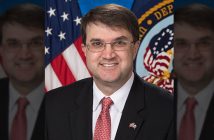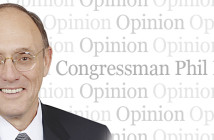On pages 12 and 13 of this week’s paper are excellent track and field photographs by a new contributor, Dakota Hamilton. One shows University High School’s Jarod Smith pole vaulting at last weekend’s Tri-Cities Track Classic.
Pondered long enough, the thought of a person sprinting down a path with a really long stick in hand, jamming the stick into a crevice, and holding on for dear life as the stick rises 14 or more feet in the air only to let go at the apex – well, it can lead one to question the vaulter’s sanity. Yet we generally put such thoughts aside and applaud the athletes’ skill and determination.
Hamilton is a graduating senior at East Tennessee State University, a psychology major with dreams of photographic success. The Gate City, Va. native’s website reveals his ambition: to one day be on the sidelines of a major professional sporting event, shooting for a major sports coverage provider. A small-town kid, he appears to exemplify ETSU President Dr. Brian Noland’s oft-repeated contention that a major element of the university’s mission is to help improve the lives of the region’s people.
The pole vaulter and the photographer both display an enthusiastic, hopeful audacity observers tend to find refreshing. In arenas that stir their passions, they strive to overcome challenges and reach levels of excellence that fulfill them and draw notice and appreciation from others. Those with some stake in their success – coaches, parents, friends, mentors – are called to nurture and guide them with the right combination of pure encouragement and wise counsel.
To blithely lavish praise without expecting accountability paves a road to unrealistic expectations, and ultimately, dejection when failures come, as they will. It is the “everyone’s a winner, you can do anything you put your mind to” side of a worthless coin. Its flip side is counsel and “support” that is cynical, defeatist, or so critical as to be destructive and not constructive. I hope Hamilton and Smith, in whatever endeavors they choose, receive good mentoring, coaching, counsel and oversight.
Last Thursday, a collection of people more powerful and influential than Hamilton or Smith gathered in Kingsport to announce their own audacious proposal: the merger of the region’s two dominant hospital systems into a “health improvement organization” whose aims will include cost containment and improved population health in this admittedly high-priced, woefully unhealthy region. Flipping the health care model toward more preventive and primary care and addressing chronic problems from preventable diseases to drug abuse – all of which cost our region blood and treasure in terms of economic strength and quality of life – is a top priority.
To help this effort, the leaders of Wellmont Health System and Mountain States Health Alliance say they’ll enlist East Tennessee State University and its broad-based health sciences program. Increased grant funding, appropriate and cost-effective delivery of care, and very likely a significant change in the type and number of jobs devoted to getting and keeping our population healthier all are in our future, the leaders suggest.
The proposal would, to a large extent, eliminate competition and consumer choice in the market. To launch this revolutionary endeavor, the systems must first gain state approval for a regulatory structure designed to insure the lack of competition is mitigated by verifiable, enforceable mechanisms to maintain better cost control and quality of care than would be possible in a standard competitive marketplace.
The prospect of vanishing competition is a justifiable cause for concern, but this whole big story – which really is just beginning – boils down to two possibilities. One is that the influential people who say they support the effort, including huge employers who pay a lot for health care, have ulterior motives.
The other is that the same people are convinced that, in today’s broader health care climate, the region’s status quo represents an irreversible path toward decline in our population’s health, our economy and our overall quality of life. Such a conclusion also accepts they have put their passion, skills and energy into constructing an initial framework for change they believe can, fully implemented, offer the best possibility of improving our people’s health, growing the economy, and protecting consumers.
Audacity is defined as “the willingness to take bold risks.” I’m not sure who, made aware of our regional health challenges, would argue that something audacious isn’t in order to address the tremendous health care challenges that ripple through every aspect of people’s lives.
Sullivan County Mayor Richard Venable, following Thursday’s news conference, said he believes the proposed change is, “going to lift everyone up.” He added this: “And it can be successful only if this region wants it to.”
As a journalist, my role in this matter includes investigating the facts as they are presented and uncovered. Our publications’ roles include conveying those facts fairly and objectively to the public and holding accountable the leaders who are carrying out this plan. Other people in other walks of life not directly involved have their own roles in this monumental endeavor.
My hope is simply this: that like the people who love and guide Dakota Hamilton and Jarod Smith, we act neither as unquestioning cheerleaders nor as hypercritical, cynical, defeatists. Frankly, both of those approaches can be easier than charting a middle course. In the matter at hand, the stakes are too high for the easy way out.




